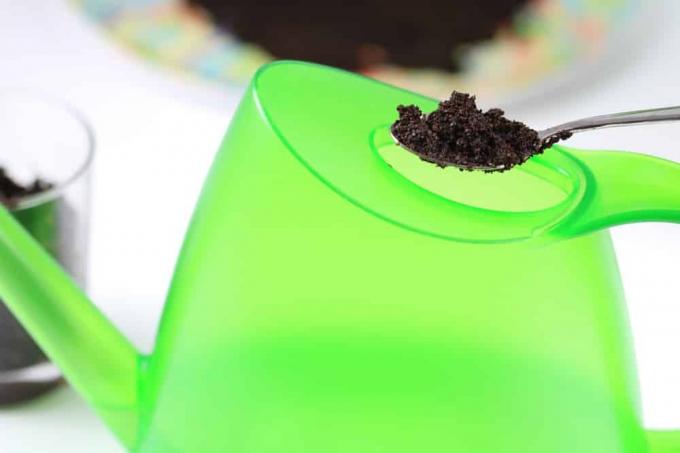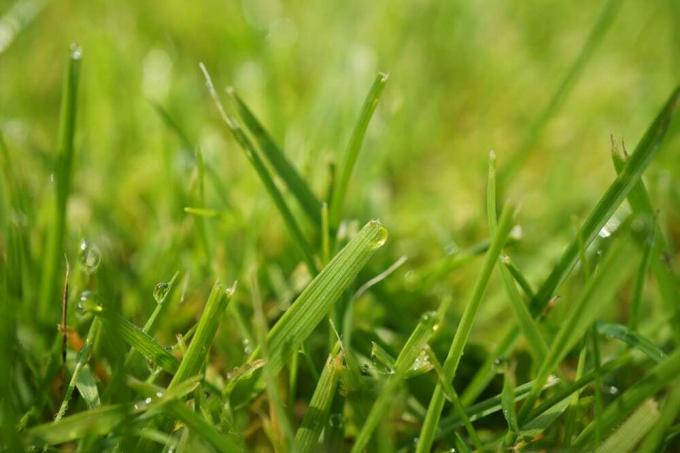
Table of contents
- What distinguishes banana peels?
- Potential for rose fertilizer
- Compost ideas
- Compostable Materials
- Layer up and implement correctly
- Conclusion
A balanced supply of nutrients plays a key role in skilful rose care. Banana peels make a valuable contribution so that the queen of flowers dons her magnificent blossom dress. This insider tip has been circulating among hobby gardeners for generations and has proven itself in daily practice. Although the natural material does not cover all needs, it still provides indispensable potassium, phosphate and magnesium. Read here how banana peels are used correctly as fertilizer for roses. There are also practical ideas for compost.
What distinguishes banana peels?
Banana peels are much more than just the natural covering of the delicious flesh. While the shell is formed from the flower cup and the outer seed shell over the course of the growing season, a wealth of valuable ingredients are stored there. As early as 1968, the Food and Agriculture Organization of the United Nations (FAO) confirmed the high Levels of key nutrients in banana peels to show their importance for use as animal feed underline. These findings result in their beneficial effect on the growth of roses and other flowers, since they also require exactly the nutrients that have been identified. The dominant ingredients at a glance:
- Sodium: 0.1 g/kg
- Phosphorus: 1.0 g/kg
- Potassium: 42.0 g/kg
- Iron: 60 mg/kg
These are the average values last confirmed by the FAO in May 2016. This value is higher in unripe banana peels, while it decreases somewhat over the course of ripening. The proportion of minerals in a dessert banana is reduced from 13.2 percent to 12 percent of the dry matter.
Potential for rose fertilizer
Looking at the composition of high-quality organic rose fertilizer, it becomes clear why banana peels are recommended as fertilizer for roses. The majority of the special fertilizers come in an NPK formulation of 7+7+10, enriched with trace elements such as iron and magnesium. While nitrogen (N) and phosphorus (P) are responsible for growth and abundance of flowers, potassium is responsible for strengthening the plants. This task is of the highest relevance in the context of rose fertilization, since royal tea roses in particular suffer from soft shoots. Potassium increases cell sap concentration, which improves the suction power of each individual cell. Your roses absorb rain and irrigation water better and the valuable moisture does not evaporate as quickly when exposed to sunlight. As if that weren't enough, biting and sucking pests such as aphids find it difficult to get through the strengthened cell walls, so potassium also acts as a natural preventative. In addition, a balanced supply of potassium lowers the freezing point in the cell sap. The result is an optimized frost resistance, so that your flower queen gets through the winter healthy and lively. Since banana peels are primarily rich in potassium, it's no surprise that they make excellent fertilizer for roses. How to do it right:
- Dry banana peels on a wire rack
- Cut with the knife
- Work 1 cup of banana peels into the surface of each rose bush in April, June and August
In addition, arise dried banana peels a rich mulch material for your roses. Cut the shells into small pieces, mix them with lawn clippings, leaves or bark mulch and distribute the mixture in the rose bed. While the mulch keeps the soil warm and moist for longer, busy soil organisms open up the potassium for the rose roots so that they can absorb the valuable nutrient. Use only certified, organic bananas. The shells of commercial goods are heavily contaminated with pesticides that nobody wants in the hobby garden.
Tip:
When roses develop brown to brown-purple leaf edge necrosis, the flower colors fade and the stems grow thinner and thinner, the flowers are suffering from a potassium deficiency. So that the nutrient is quickly available to the suffering blossom beauties, supplement the gift of crushed banana peels with potassium-rich comfrey manure, which is used in diluted form for pouring becomes.
Compost ideas
In view of the nutrient composition of banana peels, it is obvious that they cannot act as the main actor in the context of rose fertilization. Although potassium is important for strong, resistant and hardy roses, nitrogen, phosphorus and other trace elements must not be neglected. So how should banana peels be incorporated into the compost to reach their full potential? The following ideas may serve as your inspiration.
Compostable Materials
In principle, all vegetable, decomposable waste from the garden and kitchen can be used for composting. Herbaceous plants such as vegetables, flowers, herbs and perennials are best suited. In addition, fall leaves, seed weeds and withered lawn clippings are added. Vegetables, potato peelings, coffee grounds and fruit make their way from the kitchen to the compost heap. The skins of untreated bananas and other tropical fruits also make an important contribution to a balanced composition. Crushed egg shells provide calcium, while pure wood ash - along with banana peels - provides indispensable potassium. Cardboard and kitchen paper can also be used, as long as they are not printed. The manure from your pets and small animals is also a compostable material.
Tip:
Plastic, glass, stones, metal or other polluted material are unsuitable for the compost. The pages of a glossy brochure complement each other with banana peels as compost just as little as the roots of weeds.
Layer up and implement correctly
So that a compost heap actually turns into the brown gold of the hobby gardener, a well-considered layering is important. The following sequence has proven itself well in the private garden:
- A semi-shady, warm place protected by a hedge or an elder is ideal
- A wire mesh on the floor denies access to voles
- The lower 10-15 cm consists of coarse branches
- The next layer is made up of garden and kitchen waste, including banana peels
- The whole thing is sprinkled with algae lime or manure and a thin layer of garden soil
In dry weather, pour water or diluted nettle and comfrey manure over the compost heap. Depending on the desired size, further layers of garden and kitchen waste follow, creating a mountain that tapers towards the top. Within the next 14-21 days, the temperature in the compost rises significantly, killing microbes and pests. Covering with mats or oak leaves has a beneficial effect on the process. After this hot fermentation, you turn the compost heap, whereby the material is well aerated. As soon as the temperatures drop below 40 degrees Celsius, the soil organisms migrate to begin their beneficial work. For this reason, a compost must never lose contact with the ground.
This second phase lasts 3-4 weeks while the material is further processed by busy earthworms and other beneficial insects. After the compost heap has been turned one more time, it sits dormant for 3-4 months, with temperatures dropping to 20-25 degrees Celsius. You now have nutritious mulch compost for your roses. It will take another half a year before the ideal rose fertilizer has been developed.
Conclusion
Banana peels contain valuable nutrients that support the growth of your roses. A high proportion of potassium in particular strengthens the plant cells so that the queen of flowers can better defend itself against the icy cold and cunning pests. Therefore, do not throw away the skins of organic bananas after eating, but dry and cut the material to fertilize your roses. A cup incorporated into the substrate in April, June and August naturally covers the need for potassium. In combination with other kitchen and garden waste, banana peels act as an indispensable supplier of potassium in the compost heap to provide your roses with all the important nutrients.
 garden editorial
garden editorial I write about everything that interests me in my garden.
Learn more about fertilizer

Lawn lime: Lime against moss in the lawn
As soon as moss appears in the lawn, many a hobby gardener becomes restless - because soon the moss carpet can take over entire areas. With lawn lime, however, the unwelcome visitor can be skilfully put in his place.

Build your own Bokashi bucket | DIY instructions
Most of the kitchen waste goes on the compost or in the organic bin to add it back to nature's cycle. But there is a way to gain valuable fertilizer beforehand. We show how easy it is to build a Bokashi bucket and use it to obtain liquid fertilizer on the balcony or even in the apartment.

These 8 plants don't like coffee grounds as fertilizer
Hobby gardeners swear by the effect of the coffee grounds. It is fertilizer, snail protection, soil conditioner and cat deterrent all at the same time. In addition, it is free of charge and occurs daily in the household. Most plants are strengthened, but some are sensitive to the addition of coffee. We clarify.

Fertilize Christmas roses properly: 11 effective home remedies
Christmas roses are special flowers because, unlike almost all other perennials, they bloom in winter. They are insensitive and frost-hardy, and they can also multiply independently. Here you can find out what needs to be considered when fertilizing.

Lawn Bokashi: 6 steps to a cheap & natural fertilizer
The name Bokashi is still largely unknown. This method of using grass clippings comes from Japan. With a little preparation and a special form of processing, the clippings become valuable, nutrient-rich fertilizer that can be easily distributed in the garden.

Wood ash as fertilizer | These 70 plants love barbecue and charcoal
Home gardeners with a fireplace or tiled stove receive a natural fertilizer for free. Charcoal and charcoal leave behind a dusty residue that is packed with valuable nutrients. Read here under what conditions wood ash is suitable as a fertilizer. These 70 plants benefit from the unorthodox nutrient supply.


